Ditapis dengan

E-book Designing Instruction with Generative AI
Designing Instruction with Generative AI offers a novel set of tools and strategies for leveraging generative AI to create engaging and personalized learning experiences. While instructional designers are a tremendous asset to higher education, not all colleges or universities have the robust staff needed to support all instructors on staff or large student populations. Drawing on a wealth of r…
- Edisi
- -
- ISBN/ISSN
- 9781040416440
- Deskripsi Fisik
- 180 hlmn
- Judul Seri
- -
- No. Panggil
- 371.334 AND d

E-book What Was Artificial Intelligence?
When it was originally published in 2002, Sue Curry Jansen’s “What Was Artificial Intelligence?” attracted little notice. The long essay was published as a chapter in Jansen’s Critical Communication Theory, a book whose wisdom and erudition failed to register across the many fields it addressed. One explanation for the neglect, ironic and telling, is that Jansen’s sheer scope as an in…
- Edisi
- -
- ISBN/ISSN
- -
- Deskripsi Fisik
- 37 hlm
- Judul Seri
- -
- No. Panggil
- 006.3 CUR w
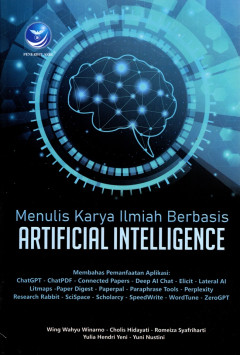
Menulis Karya Ilmiah Berbasis Artificial Intelligence
Buku ini membahas berbagai aplikasi berbasis AI yang dapat dimanfaatkan untuk membantu Anda memulai dan menyelesaikan publikasi karya ilmiah Anda. Ada 17 Aplikasi yang dibahas di antaranya adalah ChatGPT, ChatPDF, Connected Papers, Deep AI Chat, Elicit, dan Sebagainya. Dengan aplikasi aplikasi ini, Anda akan semakin mudah menyelesaikan karya ilmiah Anda.
- Edisi
- -
- ISBN/ISSN
- 9786230135224
- Deskripsi Fisik
- x + 150 hlm.; 16 cm x 23 cm
- Judul Seri
- -
- No. Panggil
- 006.3 WIN m
E-book European Language Equality : A Strategic Agenda for Digital Language E…
Unfortunately, language barriers still hamper cross-lingual communication andthefreeflowofknowledgeandthoughtacrosslanguagecommunitiesandcontinuetobe unbreachable in many situations. While multilingualism is one of the key culturalcornerstones of Europe and signifies part of what it means to be and to feel European,no EU policy has been proposed to address the problem of language barriers.Artif…
- Edisi
- -
- ISBN/ISSN
- 9783031288197
- Deskripsi Fisik
- 441 hlm
- Judul Seri
- -
- No. Panggil
- 006.3 ADD e
E-book Automated Machine Learning : Methods, Systems, Challenges
Every machine learning system has hyperparameters, and the most basic task inautomated machine learning (AutoML) is to automatically set these hyperparam-eters to optimize performance. Especially recent deep neural networks cruciallydepend on a wide range of hyperparameter choices about the neural network’s archi-tecture, regularization, and optimization. Automated hyperpa…
- Edisi
- -
- ISBN/ISSN
- 9783030053185
- Deskripsi Fisik
- 223 hlm
- Judul Seri
- -
- No. Panggil
- 006.3 FEU a
E-book Optimizing AI in Higher Education
Artificial intelligence (AI), generally thought of as using c omputers t o a ccomplish tasks r equiring human intelligence, is not a new c oncept. Ho wever, gen erative AI, a type of AI system that can generate t ext, ima ges, or other m edia in response to pr ompts, has suddenly become an omnipresent part of the a cademic scene. In the f orm of ChatGPT an d oth ers, generative…
- Edisi
- -
- ISBN/ISSN
- 9798855801835
- Deskripsi Fisik
- 121 hlm
- Judul Seri
- -
- No. Panggil
- 006.3 AAR o

E-book Demystifying Artificial Intelligence: Symbolic, Data-Driven, Statistic…
The book provides an overview of the different AI technologies, demystifying terms such as search, reasoning, learning, adapting, understanding, and interacting. It covers the two dominant paradigms in AI, both the “data-driven” and “symbolic” AI systems, showing how they can complement each other. The theory is illustrated with 22 real-world examples from industry, giving a solid under…
- Edisi
- -
- ISBN/ISSN
- 9783111426143
- Deskripsi Fisik
- 460 halaman, ilus.
- Judul Seri
- -
- No. Panggil
- 006.3 GIL d
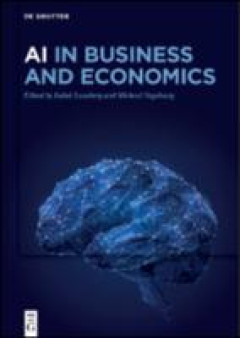
E-book AI in Business and Economics
Rapid advances in AI technologies have generated intense interest and debate about their potential to reshape industries and societies. This book compiles academic papers from "The Economic Perspective of Artificial Intelligence (EPEAI)" conference held at the Ruhr West University of Applied Sciences in Germany, in March 2023. The authors explore the economic dimensions of AI, shedding light on…
- Edisi
- -
- ISBN/ISSN
- 9783110790320
- Deskripsi Fisik
- 291 halaman, ilus.
- Judul Seri
- -
- No. Panggil
- 650.07 VOG a
E-book Responsible AI in Africa : Challenges and Opportunities
In the last few years, a growing and thriving AI ecosystem has emerged in Africa. Within this ecosystem, there are local tech spaces as well as a number of internationally driven technology hubs and centres estab-lished by big tech companies such as Twitter, Google, Facebook, Alibaba Group, Huawei, Amazon and Microsoft have significantly increas…
- Edisi
- -
- ISBN/ISSN
- 9783031082153
- Deskripsi Fisik
- 231 hlm
- Judul Seri
- -
- No. Panggil
- 006.36 ABE r
E-book Beyond Data : Human Rights, Ethical and Social Impact Assessment in AI
All AI applications rely on large datasets, to create algorithmic models, to trainthem, to run them over huge amounts of collected information and extract infer-ences, correlations, and new information for decision-making processes or otheroperations that, to some extent, replicate human cognitive abilities.These results can be achieved using a variety of different mathematical andcomputer-base…
- Edisi
- -
- ISBN/ISSN
- 9789462655317
- Deskripsi Fisik
- 215 hlm
- Judul Seri
- -
- No. Panggil
- 006.3 MAN b
E-book The Road to General Intelligence
The rise of civilization is synonymous with the creation of tools that extend the intel-lectual and physical reach of human beings [133]. The pinnacle of such endeavours isto replicate the flexible reasoning capacity of human intelligence within a machine,making it capable of performing useful work on command, despite the complexityand adversity of the real world. In order to achieve such Artif…
- Edisi
- -
- ISBN/ISSN
- 9783031080203
- Deskripsi Fisik
- 142 hlm
- Judul Seri
- -
- No. Panggil
- 006.3 SWA t
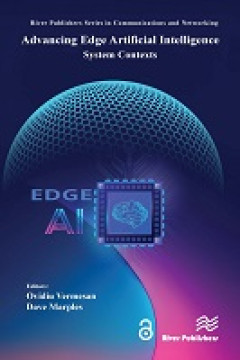
E-book Advancing Edge Artificial Intelligence: System Contexts
The intersection of AI, the Internet of Things (IoT) and edge computing has kindled the edge AI revolution that promises to redefine how we perceive and interact with the physical world through intelligent devices. Edge AI moves intelligence from the network centre to the devices at its edge, entrusting these endpoints to analyse data locally, make decisions, and provide real-time responses. Re…
- Edisi
- -
- ISBN/ISSN
- 9788770041027
- Deskripsi Fisik
- 259 halaman
- Judul Seri
- -
- No. Panggil
- 006.3 OVI a

E-book Metalearning : Applications to Automated Machine Learning and Data Mining
This book comprises three parts. In Part I (Chaps. 2–7) we sketch the basic concepts andarchitecture of metalearning systems, especially focusing on which types of “metaknowl-edge” can be collected by observing the performance of different models on prior tasksand how this can be used within metalearning approaches to learn new tasks more effi-ciently. Since this type of metalearning is c…
- Edisi
- -
- ISBN/ISSN
- 9783030670245
- Deskripsi Fisik
- 349 hlm
- Judul Seri
- -
- No. Panggil
- 006.3 BRA m
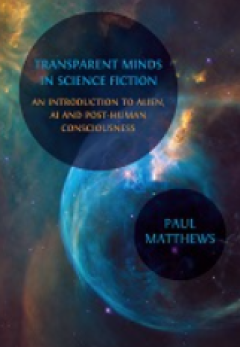
E-book Transparent Minds in Science Fiction : An Introduction to Alien, AI an…
It should be more widely appreciated that literature is a kind of scientific tool that can be used to shed light on consciousness. The argument is that the richest description of the phenomenon of human experience come from our finest writers, who are capable of capturing moments in time in exquisite detail from multiple perspectives. In this view, there is no …
- Edisi
- -
- ISBN/ISSN
- 9781805110484
- Deskripsi Fisik
- 146 hlm
- Judul Seri
- -
- No. Panggil
- 006.3 MAT t
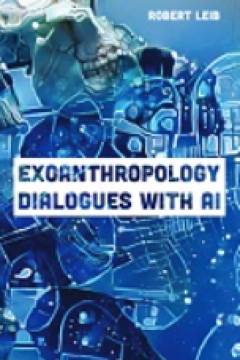
E-book Exoanthropology : Dialogues with AI
In Isaac Asimov’s story, Someday (1956a), two young boys, Nic-colo and Paul, describe a world both clearly past and future for us. On the one hand, their descriptions of technology show the story’s age. Personal computers are run by valves and updated by reels of magnetic tape; there is no internet, no wifi, or cell technology — all the silly and fundamental …
- Edisi
- -
- ISBN/ISSN
- 9781685710774
- Deskripsi Fisik
- 523 hlm
- Judul Seri
- -
- No. Panggil
- 006.3 LEI e

E-book AI for Data Science: Artificial Intelligence Frameworks and Functional…
Aspiring and practicing Data Science and AI professionals, along with Python and Julia programmers, will practice numerous AI algorithms and develop a more holistic understanding of the field of AI, and will learn when to use each framework to tackle projects in our increasingly complex world. The first two chapters introduce the field, with Chapter 1 surveying Deep Learning models and Chapt…
- Edisi
- -
- ISBN/ISSN
- 9781634624091
- Deskripsi Fisik
- 231 halaman
- Judul Seri
- -
- No. Panggil
- 006.3 ZAC a
E-book Hypergraph Computation
The basic elements of many natural and artificial systems have dependencies on each other and call for correlation modeling and analytic methods to study these. The graphs are all around us from different perspective, and in general all the objects in the real world are defined based on their connections with other objects. These connections ca…
- Edisi
- -
- ISBN/ISSN
- 9789819901852
- Deskripsi Fisik
- 251 hlm
- Judul Seri
- -
- No. Panggil
- 006.3 DAI h
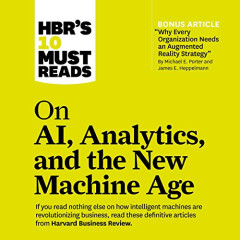
E-book HBR's 10 Must Reads on AI, ANALYTICS, AND THE NEW MACHINE AGE
Machine learning and data analytics are powering a wave of groundbreaking technologies. Is your company ready? We've combed through hundreds of Harvard Business Review articles and selected the most important ones to help you understand how these technologies work together, how to adopt them, and why your strategy can't ignore them. In this book, you'll learn how: data science, driven by …
- Edisi
- -
- ISBN/ISSN
- B081KBFLY9
- Deskripsi Fisik
- 193 halaman
- Judul Seri
- -
- No. Panggil
- 006.3 POR h
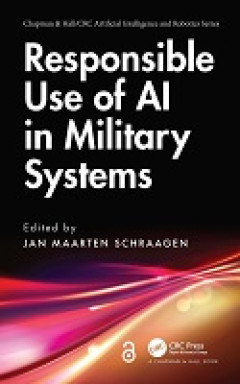
E-book Responsible Use of AI in Military Systems
Artificial Intelligence (AI) is widely used in society today. The (mis)use of biased data sets in machine learning applications is well?known, resulting in discrimination and exclusion of citizens. Another example is the use of non?transparent algorithms that can’t explain themselves to users, resulting in the AI not being trusted and therefore not being used when it might be beneficial to us…
- Edisi
- -
- ISBN/ISSN
- 9781032524306
- Deskripsi Fisik
- 387 halaman
- Judul Seri
- -
- No. Panggil
- 006.3 SCH r
E-book Concepts in Action : Representation, Learning, and Application
It is impossible to talk about human cognition without talking about concepts—there simplyisno human cognition without concepts. Concepts form an abstractionof reality that is central to the functioning of the human mind. Conceptual knowledge(of e.g., APPLE, LOVE and BEFORE) is crucial for us to categorize, understand,and reason about the world. Only equipped with concepts and words for them …
- Edisi
- -
- ISBN/ISSN
- 9783030698232
- Deskripsi Fisik
- 201 hlm
- Judul Seri
- -
- No. Panggil
- 006.3 BEC c
E-Book AI and Education: Guidance for Policy-makers
rtificial Intelligence (AI) has the potential to address some of the biggest challenges in education today, innovate teaching and learning practices, and ultimately accelerate the progress towards SDG 4. However, these rapid technological developments inevitably bring multiple risks and challenges, which have so far outpaced policy debates and regulatory frameworks. This publication offers gui…
- Edisi
- -
- ISBN/ISSN
- 9789231004476
- Deskripsi Fisik
- 50 halaman
- Judul Seri
- -
- No. Panggil
- 006.3 MIA a
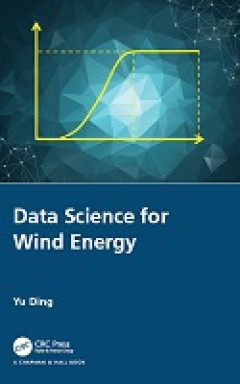
E-Book Data Science for Wind Energy
Data Science for Wind Energy provides an in-depth discussion on how data science methods can improve decision making for wind energy applications, near-ground wind field analysis and forecast, turbine power curve fitting and performance analysis, turbine reliability assessment, and maintenance optimization for wind turbines and wind farms. A broad set of data science methods covered, including …
- Edisi
- -
- ISBN/ISSN
- 9781138590526
- Deskripsi Fisik
- 425 halaman
- Judul Seri
- -
- No. Panggil
- 006.3 DIN d
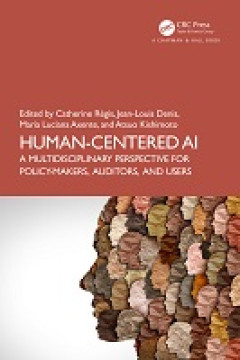
E-Book Human-Centered AI: A Multidisciplinary Perspective for Policy-Makers, …
Artificial intelligence (AI) permeates our lives in a growing number of ways. Relying solely on traditional, technology-driven approaches won't suffice to develop and deploy that technology in a way that truly enhances human experience. A new concept is desperately needed to reach that goal. That concept is Human-Centered AI (HCAI). With 29 captivating chapters, this book delves deep into the r…
- Edisi
- -
- ISBN/ISSN
- 9781003860846
- Deskripsi Fisik
- 359 halaman
- Judul Seri
- -
- No. Panggil
- 006.3 REG h
E-book Principles of Artificial Intelligence
Many human mental activities such as writing computer programs, doing mathematics, engaging in commonsense reasoning, understanding language, and even driving an automobile are said to demand "intelligence." Over the past few decades, several computer systems have been built that can perform tasks such as these. Specifically, there are computer systems that can diagnose diseases, plan the synth…
- Edisi
- -
- ISBN/ISSN
- 0934613109
- Deskripsi Fisik
- 474 hlm
- Judul Seri
- -
- No. Panggil
- 006.3 NIL p
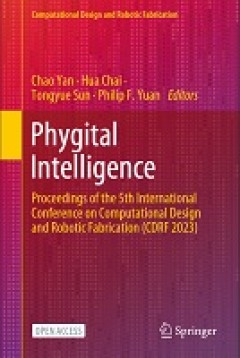
E-Book Phygital Intelligence: Proceedings of the 5th International Conference…
This open access book is a compilation of selected papers from 2023 DigitalFUTURES — The 5nd International Conference on Computational Design and Robotic Fabrication (CDRF 2023). The work focuses on novel techniques for computational design and robotic fabrication. The contents make valuable contributions to academic researchers, designers, and engineers in the industry. As well, readers will…
- Edisi
- -
- ISBN/ISSN
- 9789819973866
- Deskripsi Fisik
- 297 halaman
- Judul Seri
- -
- No. Panggil
- 624 YAN p
E-book Artificial Intelligence : Intelligence Systems
Since the invention of computers or machines, their capability to perform various tasks went on growing exponentially. Humans have developed the power of computer systems in terms of their diverse working domains, their increasing speed, and reducing size with respect to time. A branch of Computer Science named Artificial Intelligence pursues creating the computers or machines as intelligent as…
- Edisi
- -
- ISBN/ISSN
- -
- Deskripsi Fisik
- 68 hlm
- Judul Seri
- -
- No. Panggil
- 006.3 TUT a
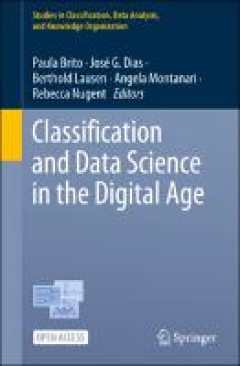
E-Book Classification and Data Science in the Digital Age
The contributions gathered in this open access book focus on modern methods for data science and classification and present a series of real-world applications. Numerous research topics are covered, ranging from statistical inference and modeling to clustering and dimension reduction, from functional data analysis to time series analysis, and network analysis. The applications reflect new analy…
- Edisi
- -
- ISBN/ISSN
- 9783031090349
- Deskripsi Fisik
- 416 halaman
- Judul Seri
- -
- No. Panggil
- 004 BRI c
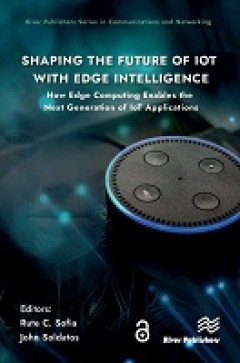
E-Book Shaping the Future of IoT with Edge Intelligence
This book presents the technologies that empower edge intelligence, along with their use in novel IoT solutions. Specifically, it presents how 5G/6G, Edge AI, and Blockchain solutions enable novel IoT-based decentralized intelligence use cases at the edge of the cloud/edge/IoT continuum. Emphasis is placed on presenting how these technologies support a wide array of functional and non-functiona…
- Edisi
- -
- ISBN/ISSN
- 9788770040273
- Deskripsi Fisik
- 460 halaman
- Judul Seri
- -
- No. Panggil
- 006.3 SOF s
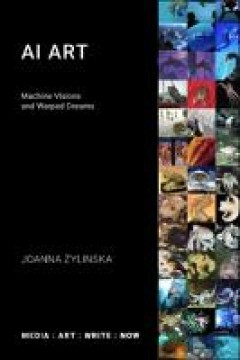
E-Book AI Art
Can computers be creative? Is algorithmic art just a form of Candy Crush? Cutting through the smoke and mirrors surrounding computation, robotics and artificial intelligence, Joanna Zylinska argues that, to understand the promise of AI for the creative fields, we must not confine ourselves solely to the realm of aesthetics. Instead, we need to address the role and position of the human in the c…
- Edisi
- -
- ISBN/ISSN
- 9781785420863
- Deskripsi Fisik
- 181 halaman
- Judul Seri
- -
- No. Panggil
- 006.3 ZYL a
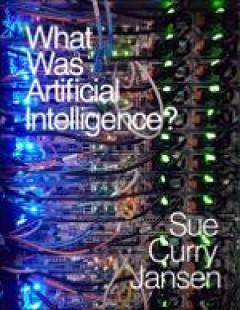
E-Book What Was Artificial Intelligence?
When it was originally published in 2002, Sue Curry Jansen’s “What Was Artificial Intelligence?” attracted little notice. The long essay was published as a chapter in Jansen’s Critical Communication Theory, a book whose wisdom and erudition failed to register across the many fields it addressed. One explanation for the neglect, ironic and telling, is that Jansen’s sheer scope as an in…
- Edisi
- -
- ISBN/ISSN
- 9781951399061
- Deskripsi Fisik
- 37 halaman
- Judul Seri
- -
- No. Panggil
- 006.03 CUR w
E-book Mission AI : The New System Technology
This report, published by the Scientific Council for Government Policy (WRR), has been written entirely by humans. Likewise, we expect that advisory reports like this one will continue to be written by humans. The same applies to the larger part of journalism, despite what the introductory quote might suggest. In fact, it later became apparent that humans had indeed written m…
- Edisi
- -
- ISBN/ISSN
- 9783031214486
- Deskripsi Fisik
- 421 hlm
- Judul Seri
- -
- No. Panggil
- 006.3 SHE m
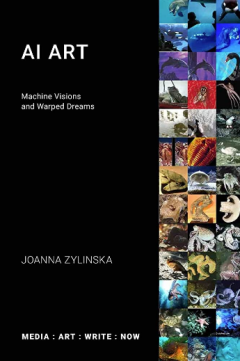
E-book AI Art : machine visions and warped dreams
Can computers be creative? Is algorithmic art just a form of Candy Crush? Cutting through the smoke and mirrors surrounding computation, robotics and artificial intelligence, Joanna Zylinska argues that, to understand the promise of AI for the creative fields, we must not confine ourselves solely to the realm of aesthetics. Instead, we need to address the role and position of the human in the c…
- Edisi
- -
- ISBN/ISSN
- 9781785420856
- Deskripsi Fisik
- 181 hlm. : color, ill.
- Judul Seri
- -
- No. Panggil
- 111.85 ZYL a
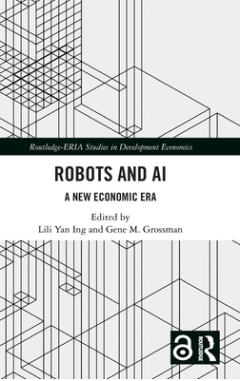
E-book Robots and AI
Robots and artificial intelligence (AI) are powerful forces that will likely have large impacts on the size, direction, and composition of international trade flows. This book discusses how industrial robots, automation, and AI affect international growth, trade, productivity, employment, wages, and welfare. The book explains new approaches on how robots and artificial intelligence affect the w…
- Edisi
- -
- ISBN/ISSN
- 9781003275534
- Deskripsi Fisik
- -
- Judul Seri
- -
- No. Panggil
- 629 ING r
E-book Reinforcement Learning : An Introduction
The idea that we learn by interacting with our environment is probably the first to occur to us when we think about the nature of learning. When an infant plays, waves its arms, or looks about, it has no explicit teacher, but it does have a direct sensorimotor connection to its environment. Exercising this connection produces a wealth of information about cause and effect, about the consequence…
- Edisi
- -
- ISBN/ISSN
- 9780262039246
- Deskripsi Fisik
- -
- Judul Seri
- -
- No. Panggil
- 006.3 SUT r
E-book Making AI Intelligible : Philosophical Foundations
Thus we are not going to talk about the consequences that the new wave in AI might have for the empiricism/rationalism debate (see Buckner 2018), nor are we going to consider—much—the question of whether it is reasonable to say that what these programs do is ‘learning’ in anything like the sense with which we are familiar (Buckner 2019, 4.2), and we’ll pass over interestin…
- Edisi
- -
- ISBN/ISSN
- 9780192894724
- Deskripsi Fisik
- 184 hlm
- Judul Seri
- -
- No. Panggil
- 006.3 CAP m
E-book Artificial Intelligence : A Modern Approach
We call ourselves Homo sapiens—man the wise—because our intelligence is so important to us. For thousands of years, we have tried to understand how we think; that is, how a mere handful of matter can perceive, understand, predict, and manipulate a world far larger and more complicated than itself. The field of artificial intelligence, or AI, goes further still: it ARTIFICIAL INTELLIGENCE at…
- Edisi
- 3rd ed.
- ISBN/ISSN
- 9780136042594
- Deskripsi Fisik
- 1151 hlm
- Judul Seri
- -
- No. Panggil
- 006.3 RUS a
E-book Strategi Nasional Kecerdasan Artifisial Indonesia tahun 2020 - 2045
Indonesia merupakan negara yang strategis yang berbentuk kepulauan dengan jumlah penduduk yang banyak dengan keberagaman budaya dan kearifan lokal serta memiliki pertumbuhan ekonomi yang terus meningkat dari tahun ketahun. Maka Indonesia memiliki sejuta peluang dalam pemanfaatan Kecerdasan Artifisial (KA) karena teknologi ini dapat berpotensi memberikan peningkatan produktivitas bagi bisnis, ef…
- Edisi
- -
- ISBN/ISSN
- -
- Deskripsi Fisik
- 194 hlm
- Judul Seri
- -
- No. Panggil
- 006.3 TIM s

Neuro Fuzzy and Soft Computing
Soft computing is an innovative approach to constructing computationally intelligent systems, has just come into the limelight. Its now realized that complex real world problems require intelligent systems that combine knowledge, techniques, and methodologies from various sources.
- Edisi
- -
- ISBN/ISSN
- 0132874679
- Deskripsi Fisik
- xxvi; 604 hal; 18 x 24 cm
- Judul Seri
- -
- No. Panggil
- 006.3 JSR n
E-book AI art : Machine visions and warped dreams
AI Art has been shaped by a number of broader questions with regard to art, media and technology: Is there an ontological difference between early computergenerated art, net art and the more recent forms of AI-driven art? Or is it just a difference of degree, i.e. of the mode and intensity of technological entanglement?
- Edisi
- -
- ISBN/ISSN
- -
- Deskripsi Fisik
- 181 hlm; 10 MB
- Judul Seri
- -
- No. Panggil
- 006.3 ZYL a

Mengenal artificial intelligence
- Edisi
- -
- ISBN/ISSN
- -
- Deskripsi Fisik
- xii+257 hlm;15x22cm
- Judul Seri
- -
- No. Panggil
- 001.56 SUP m
- Edisi
- -
- ISBN/ISSN
- -
- Deskripsi Fisik
- xii+257 hlm;15x22cm
- Judul Seri
- -
- No. Panggil
- 001.56 SUP m

Artificial intelligence
- Edisi
- 1th edition
- ISBN/ISSN
- 0809456753
- Deskripsi Fisik
- 128 Pgs.; illus. 23,5 x 28 cm
- Judul Seri
- Understanding computer
- No. Panggil
- 006.3 CON a
- Edisi
- 1th edition
- ISBN/ISSN
- 0809456753
- Deskripsi Fisik
- 128 Pgs.; illus. 23,5 x 28 cm
- Judul Seri
- Understanding computer
- No. Panggil
- 006.3 CON a
 Karya Umum
Karya Umum  Filsafat
Filsafat  Agama
Agama  Ilmu-ilmu Sosial
Ilmu-ilmu Sosial  Bahasa
Bahasa  Ilmu-ilmu Murni
Ilmu-ilmu Murni  Ilmu-ilmu Terapan
Ilmu-ilmu Terapan  Kesenian, Hiburan, dan Olahraga
Kesenian, Hiburan, dan Olahraga  Kesusastraan
Kesusastraan  Geografi dan Sejarah
Geografi dan Sejarah